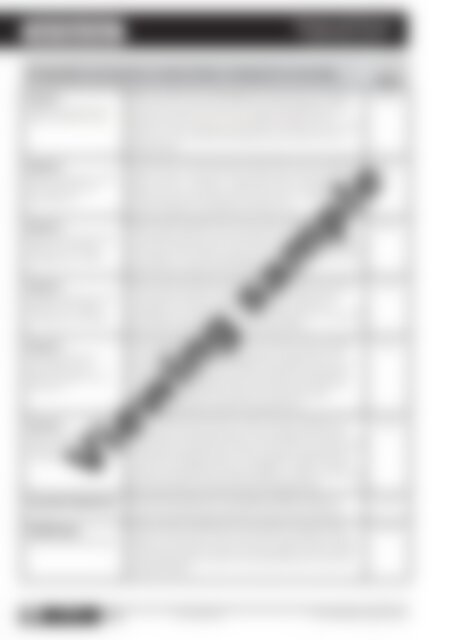PR-6170RUK Science A STEM Approach - Primary 1
You also want an ePaper? Increase the reach of your titles
YUMPU automatically turns print PDFs into web optimized ePapers that Google loves.
Unit Overview<br />
Energy and Forces<br />
HOW THINGS MOVE<br />
The way objects move depends on a variety of factors, including their size and shape.<br />
Lesson 1<br />
How do humans and<br />
other animals move?<br />
Lesson 2<br />
How do objects move?<br />
Can they move by<br />
themselves?<br />
Lesson 3<br />
How does the size and<br />
shape of an object<br />
change how it rolls?<br />
Lesson 4<br />
How does the size and<br />
shape of an object<br />
change how it slides?<br />
Lesson 5<br />
How does the size<br />
and shape of an<br />
object change how it<br />
bounces?<br />
Lesson 6<br />
How does the size and<br />
shape of an object<br />
change how it spins?<br />
Pupils use their prior knowledge of living things to predict<br />
how humans and animals move. They investigate the body<br />
features animals use to move in different ways and sort<br />
animal cards into groups according to how they move. Pupils<br />
watch an online video that explains how animals move in<br />
simple terms.<br />
Pupils reflect on how humans and animals move to predict if<br />
objects move in the same way. Pupils are introduced to the<br />
terms 'motion', 'position', 'speed' and 'force' using simple<br />
definitions and word wall cards. They then investigate a<br />
range of objects to identify how they move.<br />
Pupils identify objects that move using a rolling motion.<br />
They predict how the size and shape of an object affects the<br />
speed and distance that it rolls. They conduct an experiment<br />
to compare two objects rolling down a ramp and record their<br />
observations using a simple table.<br />
Pupils identify objects that can slide along a smooth surface.<br />
They predict how the size and shape of an object affects<br />
the speed and distance that it slides. They conduct an<br />
experiment to compare two objects sliding down a ramp and<br />
record their observations using a simple table.<br />
Pupils identify objects that bounce and the actions needed<br />
to put objects into a bouncing motion. They predict how<br />
the size and shape of a ball affects the height it bounces to<br />
and the direction it bounces. They conduct an experiment<br />
to compare two different balls by dropping each ball from<br />
a controlled height at the same time, discussing their<br />
observations as they conduct the experiment.<br />
Pupils identify toys that spin and the actions needed to put<br />
objects into a spinning motion. They predict how the size<br />
and weight of cardboard tube spinners affects the speed and<br />
duration at which they spin. They conduct an experiment to<br />
compare two different-sized or weighted cardboard tubes,<br />
using a controlled flick to get the object in motion, discussing<br />
their observations as they conduct the experiment.<br />
Viewing sample<br />
Pages<br />
40-43<br />
44-47<br />
48-51<br />
52-55<br />
56-57<br />
58-59<br />
Summative Assessment<br />
<strong>STEM</strong> Project<br />
Roll Down the Racetrack<br />
Pupils demonstrate their knowledge of different types of<br />
motion by identifying toys that roll, slide, bounce and spin.<br />
Pupils create a racetrack for a toy sports car and a toy fire<br />
engine to roll down at the same time. They will then create a<br />
video describing the shape, size and weight of each vehicle<br />
and showing which vehicle moved faster/slower and which<br />
travelled further.<br />
60-62<br />
63-69<br />
38<br />
<strong>Science</strong>:<br />
A <strong>STEM</strong> AP<strong>PR</strong>OACH<br />
Infants 978-1-912760-14-5 Prim-Ed Publishing – www.prim-ed.com


















